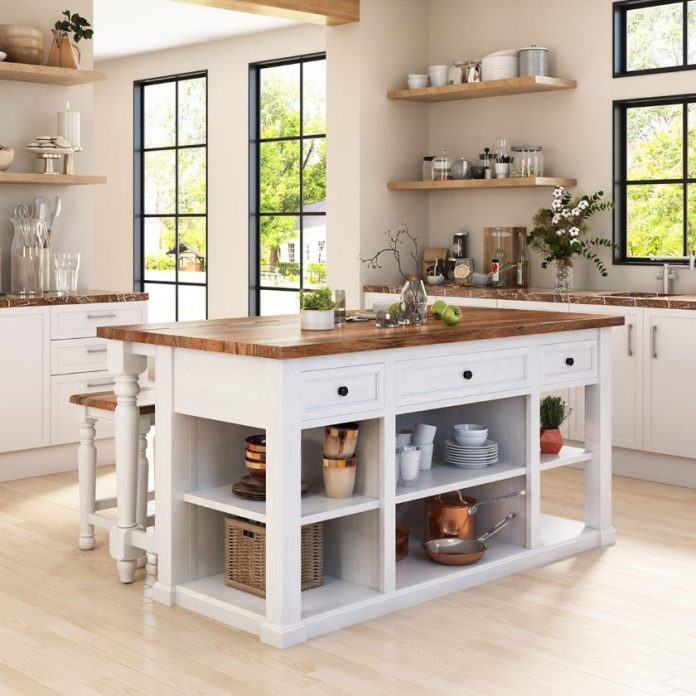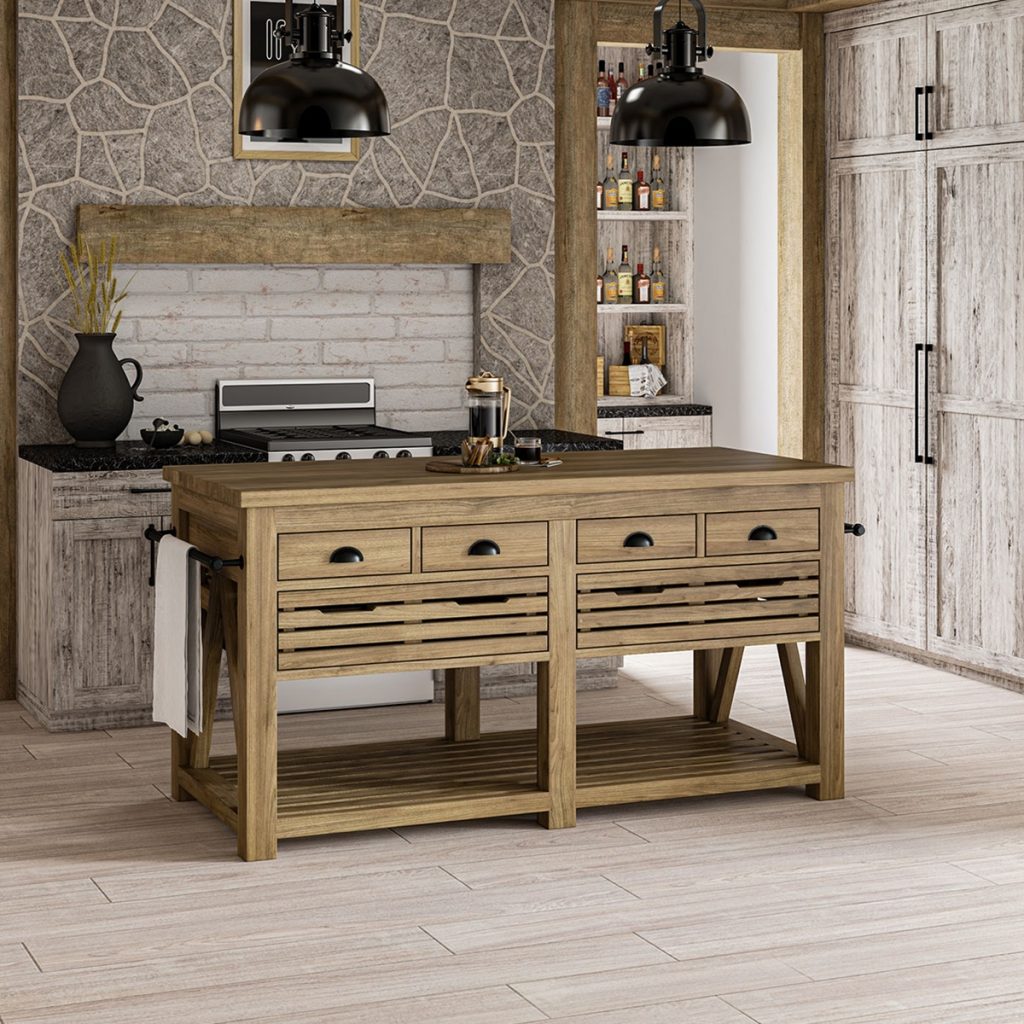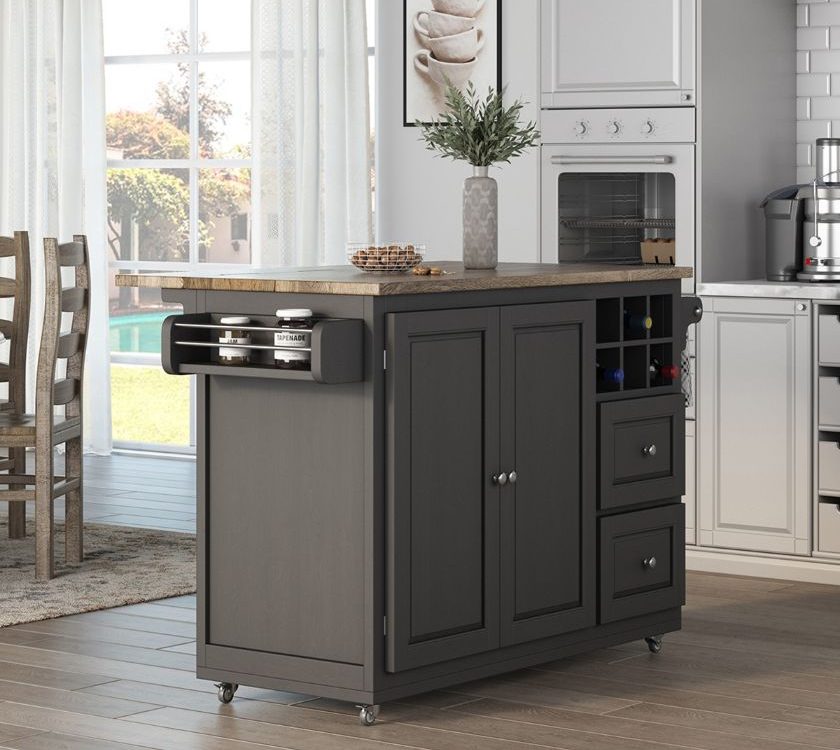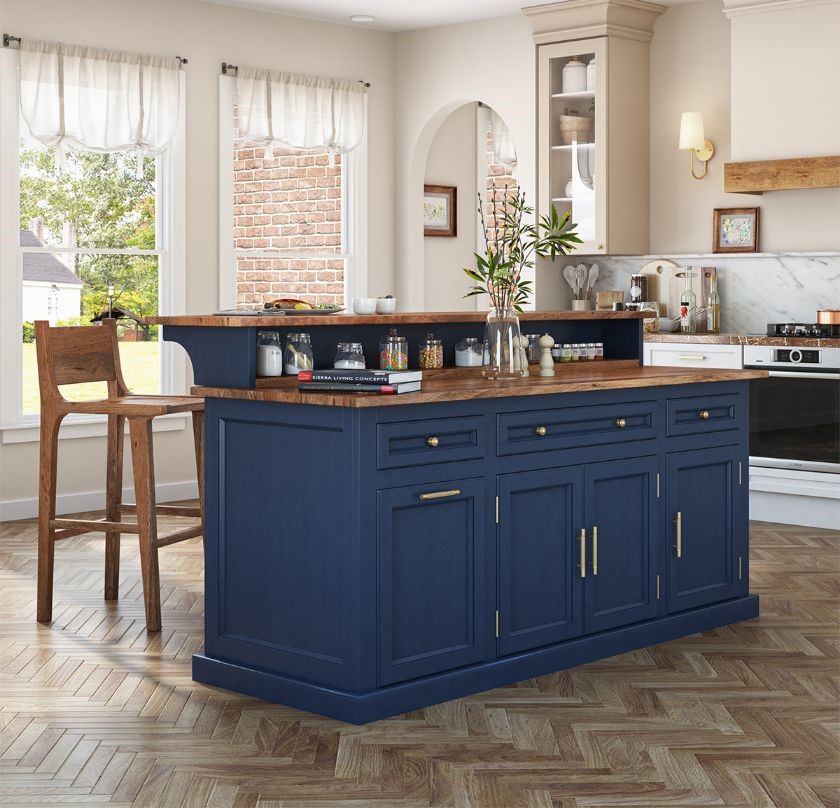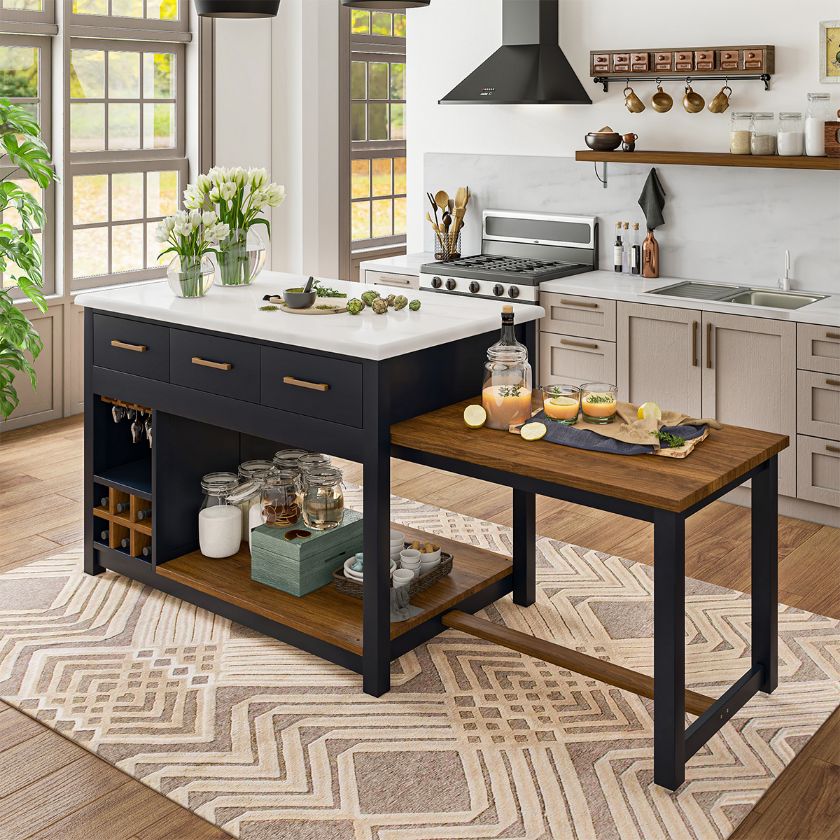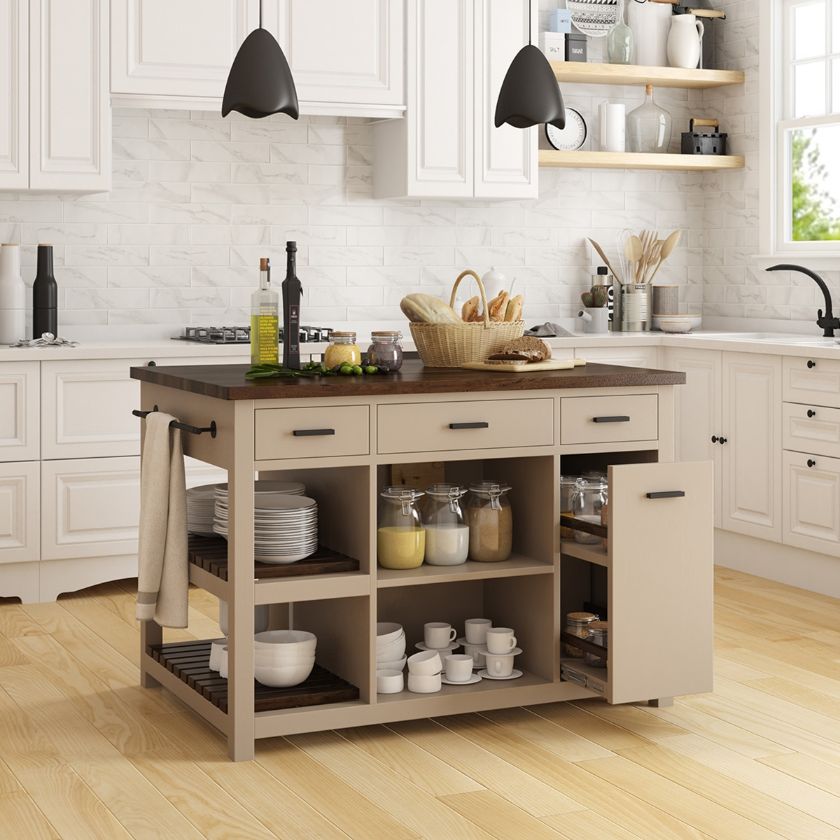A Step-By-Step Guide on How to Choose the Perfect Kitchen Island
Last Updated on June 21, 2024 by SierraLivingConcepts
How to Choose the Perfect Kitchen Island
Kitchen islands have become a common and popular fixture in the modern household due to their versatility, functionality, and aesthetic enhancement. They provide extra storage space, counter space, and a place for dining and socializing. They are available in a wide range of sizes and shapes, thereby making it easy to find one that suits your needs and the design of the kitchen.
Decorating your kitchen island can add some extra pizzazz to your kitchen and make it feel more inviting and functional. You can also express your creativity and wow your family and friends. Here is a complete guide to help you transform your home with a kitchen island. In this blog, we will discuss some popular kitchen island décor and decorating ideas.
Step 1: Choosing the right type
Selecting the right kitchen island design for your home will add to its utility and visual appeal. Here are some popular types:
Kitchen Island Table:
This versatile and functional piece of furniture can make your kitchen more organized and visually appealing. A kitchen island table can serve as a dinette and also give you counter space for chopping and baking.
Tip: If your kitchen is small, you can purchase a table kitchen island that will double as a prep and baking station and breakfast nook.
Portable kitchen island:
With extra storage and counter space, a portable kitchen island or rolling cart is a practical option to go for. It can be used as a buffet table and moved according to your needs and convenience. And let’s not forget that it can be stored away to create more space whenever needed.
Stationary kitchen island:
An ideal place for food preparation and dining, a stationary kitchen island is another wonderful option with storage and counter space. As this is a fixed furniture piece, it provides the needed stability, and you can install a butcher block island for better utility. Types of stationary kitchen islands.
Two Top Kitchen Island
Extendable Kitchen island
Drop Leaf Kitchen Island
Step 2: Deciding the size and layout
Deciding on the size and layout of a kitchen island involves considering various factors. The dimensions of your kitchen and the table island should be in proportion. It requires you to consider the clearance around the island as well as minimum and maximum recommendations for better movement and convenience. Aim for a minimum of 36 to 42 inches of walking space around the island to allow for comfortable movement while cooking and accessing cabinets and appliances.
Another thing to consider is what the primary functions of the island would be. Will it mainly serve as a food preparation area, a dining space, or a combination of both? The minimum recommended size of an island is 24 inches by 48 inches, and the maximum is an area of 10% of the kitchen. The standard height for kitchen islands typically ranges between 36 and 42 inches. Islands without seating usually have a height of 36 inches, providing a comfortable level for food preparation and other tasks. However, kitchen islands with seating, like a breakfast bar or dining area, are often elevated to a height of 42 inches to accommodate bar stools or chairs.
Tip: To get a rough idea of the kitchen island size, put a table in your kitchen and attach a cardboard cutout of the size of the countertop you are considering.
Step 3: Matching the style and theme
The style of the kitchen island should match the existing décor. If your home has a farmhouse or rustic style, go for a wooden kitchen island that aligns with this aesthetic. If you love sleek designs, select a modern kitchen island that will match the minimalist vibe. Select a table kitchen island with a rustic wood top and an iron base to blend in seamlessly with an industrial-style kitchen.
Think of a theme to match the kitchen island style. If you want to bring a whiff of the sand and ocean, bring in wicker baskets and woven trays for storage and organization. This will help you set up a coastal-style theme. In the same way, a black kitchen island will showcase your love for contemporary themes. Get a pair of metal stools for seating to take it a notch higher.
Tip: Select a butcher block island with a white or soft gray base to display a farmhouse theme
Step 4: Considering the correct countertop
The material you select for the countertop should be easy to clean and long-lasting. It also depends on whether you want to use it as a breakfast nook, bar area, or dinette. Select one based on your needs.
Wooden Top Kitchen Island:
Nobody can go wrong with a solid wood kitchen island countertop! Apart from adding style to your interior décor with warmth and earthiness, a wooden countertop provides your kitchen with a sturdy and stable work area. A butcher block countertop kitchen island can be used as a tabletop or a multifunctional counter for chopping, baking, and dining as well.
Tip: Consider adding a touch of greenery with potted herbs or small succulents to infuse freshness and color.
Marble Top:
The dramatic veins and swirls of a marble countertop will give your kitchen island a sophisticated look. You get several colors to select from that match your taste, from white to cool blue and earthy brown to forest green. However, a marble countertop requires a lot of maintenance because of its porous surface.
Tip: Display sleek and modern kitchenware or brass trays to complement the luxurious feel of marble.
Granite:
Exuding a timeless aura, a kitchen island with a granite countertop provides you with a smooth and functional surface. Heat-resistant and easy to clean, a granite countertop is friendly on the pocket, but its sheen may fade with time.

Tip: Decorating granite countertops with ceramic and terracotta items can complement the natural beauty of the granite. Pair it with metallic-finished or upholstered stools to complete the look.
Quartz:
A kitchen island table with a quartz countertop is a popular and pocket-friendly option. Available in different colors and designs, it is heat-resistant, easy to install, and low maintenance; however, it is not resistant to stains and scratches.
Tip: Arrange decorative glassware, colorful jars, or ceramic containers filled with vibrant ingredients to add contemporary elegance.
Step 5: Coordinating colors and patterns
Colors and patterns play a pivotal role in creating an aesthetically pleasing kitchen island. The kitchen’s style significantly influences the color selection for the island—either harmonizing it with the existing kitchen palette or making it a standout focal point by using contrasting hues. Contrasting colors between the island and surrounding cabinets can create an interesting focal point. For those seeking a vibrant interior, bold tones like navy blue, emerald green, or red can make a bold statement, while a herringbone pattern adds texture and visual interest.

Consider the overall style and mood you aim to achieve in your kitchen. Equilibrium is key; balancing colors and patterns with neutral tones prevents overwhelming the space. To ensure a cohesive look, opt for colors that complement or contrast harmoniously with the walls, cabinets, or backsplash.
Tip: Introduce splashes of color with vibrant upholstery on the seats, a lively table runner, or a wooden fruit bowl atop the countertop.
Step 6: Storing and organizing
A well-organized kitchen island can make cooking and dining much easier and more enjoyable. Begin by assessing your storage needs, taking into account your cooking habits and frequently used kitchen items. You can opt for organizers and drawer dividers to neatly arrange utensils and small items like spices and cutlery. Pot racks and sliding baskets can help maximize cabinet space.
Another important aspect of organizing your kitchen island is keeping it clean and clutter-free. Make sure to regularly go through your storage areas and get rid of any items that you no longer need or use.
Tip: Convert your kitchen island into a coffee bar by installing appliances on the counter and a floating shelf near it to house mugs, coffee grounds, sugar, and other essentials.
Step 7: Selecting lighting and accessories
Lighting:
Lighting is an essential component of any kitchen décor to brighten up the look. One favorite lighting option among home interior designers is the pendant light. Pendant lamps act as task lights for cutting, chopping, and preparing food, apart from brightening up and enhancing your kitchen island area and the overall aesthetic of the place. You can also opt for a small chandelier to enhance the appearance of your kitchen decor. A frosted glass ceiling lamp just above the kitchen island will illuminate the area with elegance.
Tip: If you are looking for a rustic vibe, go for hanging lights with a series of exposed-filament bulbs.
Accessories:
Picking up the right accessories for your kitchen island can make it more inviting and practical. A pot rack is a great addition to a kitchen island, and it can be installed above the island to hang pots and pans. Further, it can also serve as a decorative element and make the space visually interesting. A wine rack, knife block, and built-in cutting board can be considered to amp up the look. Select a pair of bar stools and chairs that match the countertop, and set up a dining station for quick meals.
Tip: You can get a glass cake stand for storing pastries and mason jars for cookies.
Step 8: Caring and Maintaining
Follow these simple care and maintenance tips to keep your kitchen island in top shape for years to come.
- Wipe down the surface with a damp cloth after each use to prevent spills and stains from setting in.
- For tougher stains, use a mild soap solution and a soft cloth. Do not use abrasive cleaners or scrubbers, as they may damage the surface.
- If you have a wooden countertop, oil it once every month. This will prevent drying and cracking.
- Avoid placing hot items directly on the surface. Use trivets or coasters to protect it from heat damage.
- For granite or marble surfaces, use a pH-neutral cleaner and avoid acidic solutions like vinegar or lemon juice, as these can cause etching.
- You can consider installing a protective layer over the kitchen island countertop, such as heat-resistant mats.
- To safeguard the island surface from scratches, ensure the use of felt or rubber pads underneath countertop appliances.
No matter what type of kitchen island you go for, there are loads of decorating ideas to make it your own and craft a space that’s both practical and stylish. Remember, your kitchen reflects your personality, so make sure to add your personal touch when picking the perfect island for your space.


